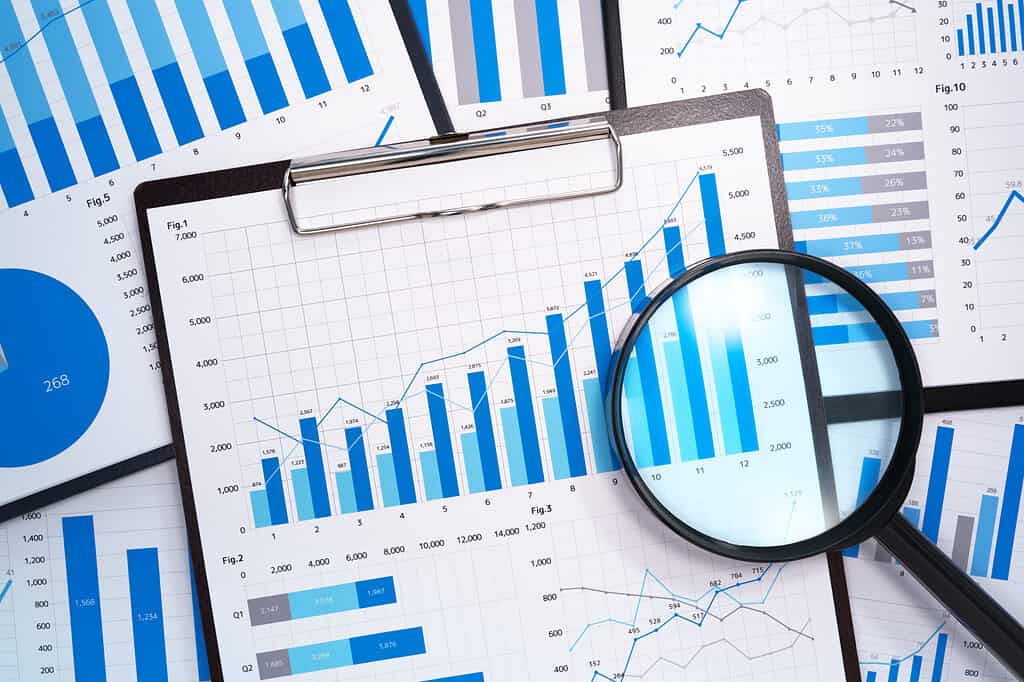
Throughout any project, you’re going to gather up quite a bit of data. Now, this can be broken down into two categories: variable and attribute data. Understanding the difference and learning how it is applicable during the analysis stage can be crucial for future decision-making. So, with that in mind, let’s take a deeper dive into how these forms of data differ.
What Is Variable Data?

Variable data is any kind of information that is represented and recorded as measurements. The term is often used when discussing the creation of control charts for process analysis. Variable data is quantitative, which means it can be described with a numerical value and can change along a perpetual scale. This kind of data includes things like length in inches, temperature in degrees, or weight in pounds.
The Benefits of Variable Data
This kind of information is useful for control charts, but it’s also an essential element of business analysis beyond this purpose. It is well-suited for more advanced analytical techniques and mathematical operations, which means it can be manipulated and strategically used by statisticians and data scientists.
How to Create Variable Data
The way data is collected, organized, and presented has profound implications for the results. Creating variable data is a simple matter of using uniform and scaled measurements to assess product or process state. In short, measure everything with a solid standard and units.
What is Attribute Data?

Attribute data is more qualitative, which means it focuses on how individual items relate to general requirements. Attribute data can often be boiled down to a “yes or no” question. Either a product or process meets a certain standard or it does not. For example, when sitting down a chair will either support the person or break. Attribute data describes the capability of the chair to meet the demands placed on it.
The Benefits of Attribute Data
While it’s not as useful in more complex calculations, there are plenty of reasons why attributes are an important tool. Since it’s already confined to discrete categories, this kind of information is already relevant and easy to understand. It also helps keep the issues clear and keep the focus on how the data points connect to real life.
How to Create Attribute Data
Collecting attribute data usually requires asking the right questions. Does a cup hold water or does it leak? Is there enough gas in the car to get to work? Can this product perform its basic features to minimum specifications?
Attributes are all about assessing the specific capabilities of the object in question. What capabilities you care about and what counts as a success depends on the demands of the situation. Analysts must be careful and thorough when setting up this kind of study.
Variable vs. Attribute Data: What’s the Difference?

The differences between attribute and variable data are mostly in details and presentation. Attribute data can show if something failed or not, while variable data can show how much it failed. It’s not just about being more detailed though.
Variable data is collected through objective measurement and is oriented around the dimensions, characteristics, or features of the subject. Attribute data is only centered around the utility, benefit, or capability of the subject.
Variable vs. Attribute Data: Who Would Use Variable Data and Attribute Data?

Business leaders who embrace Six Sigma practices need to learn about control charts and the basic elements needed to create them. Companies should use both kinds of data regularly as basic material for their statistical analysis and as starting points for discussion about strategic development.
However, choosing one type of data over the other for a specific situation depends on the goals. Generally, analysts focus on attribute data when they want to examine many different types of products or processes and how they relate to the larger operation. Variable data is preferred when examining the state of products or processes individually to find ways to improve them.
Variable vs. Attribute Data: Real-World Scenarios
A popular amusement park has roller coasters and rides for children of all ages. Due to the large target age range, there are quite a few rides in the park that have minimum and maximum sizes. This means the park has to gather data about every customer before they get on these age-restricted rides.
If the park measured each child’s height when they walked into the park, that would be considered variable data. However, checking if a child is above the “Must be taller than this to ride” sign would be attribute data. Variable data is an objective measurement of the child’s height and attribute data is from the relative comparison of being able to get on the ride or not.
Variable vs. Attribute Data: Uses in Six Sigma
While we’ve spent discussing how these data types work, these haven’t been tied fully into the Six Sigma methodology. We often use variables like Sigma Level, Cpk, CP, and DPMO when discussing processes. Variable and attribute data serve as a bedrock from where these calculations and ratios are derived.
Consider for a moment just one element of the production line. You’re looking at defects, you’ve run the tests, you’ve gotten the data points. So, the measurements for how far out of spec something is would be your variable data. Whether or not this is considered a defect would be your attribute data.
These same concepts can apply to likes of Cpk, where variable and attribute Cpks are often observed and useful for statistical analysis in Six Sigma. Using something like our conversion tool, you can see how these measurements align with the likes of DPMO, and Sigma Level.
Real World Examples
Attribute data has many use cases, depending on your overall intent. However, one area where it is making a clear difference is in managing emissions. The ecological impact of many business processes can cause quite a bit of damage, so quantifying that is important. EarnDLT is doing its best to provide attribute data that meets compliance needs while being auditable.
Other Useful Tools for Analysis and Evaluation
Variable and attribute data are just concepts, they don’t paint the full picture of how you utilize them best during the analysis stage. You can dive into further detail by looking at the likes of common cause and special cause variations, which are explored in more detail here.
Additionally, you might want to take a closer look at other data types used during statistical analysis. I’d recommend learning and mastering the differences between categorical and continuous data types. Mastering all aspects of analysis yields big results when it comes time to start improving your processes.
Take Control of Data
Data is only a dry subject until you see it in action. Understanding how to harness the power of information is a powerful asset for any business leader and it’s certainly a boon to their companies. Take the time to learn about statistics and data science because they are handrails on the stairs to efficient and Lean management practices.